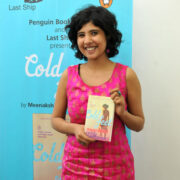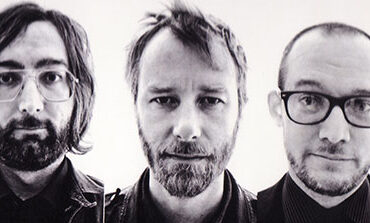We read about superheroes. We read about supervillains trying to destroy the planet. We also read about how these superheroes fend off the supervillains and save the world. After we read these comics and realise that what we call as a ‘graphic novel’ is not totally graphic, we read Alan Moore’s Watchmen. And yes, we change our mind.

Everyone. This comic book has been torn apart, ripped, and had every panel carefully analysed. It has been the subject of numerous literary discussions, with Time magazine naming it as the “one of the 100 greatest novels of the past century”. Years have passed and so we have ushered into new comic ages, but Watchmen has not been challenged yet. While comics have come a long way since the conventional “only for kids” tag, Watchmen is certainly one which even parents might find hard to digest — hence, the ‘A’ rating. Along with a few others, this quintessential graphic novel was one of the pioneers, shaping and paving the path to the modern day dark, twisted world of comics as we know it.

Who watches the Watchmen?
With the Cold War scenario and alternate American history, Watchmen gives its readers the unexpected in a cartoony, pop-arty comic book. Featuring the brilliant artwork of Dave Gibbons, the tale is dark and gritty, desperate yet awesome, dirty yet tender, sentimental but violently bloody, and madly appropriate. There are superheroes and antiheroes, pirates and skulls, beautiful sex, and nasty rape. Like clockwork, Watchmen weaves through a multitude of characters and their stories, past and present, before converging into a majestic theatrical performance of sorts to find reason in the choice that is made — right or wrong? The fierce script and the pathbreaking depiction of the story take you into a trance of sorts, where you come across heroic characters, rapists, slasher psychos, bloody pirates, science fiction, and some heavy duty gore.
The plot is set during the Cold War era, when the world was on the brink of a nuclear war among the two superpowers and vigilantism was outdated. However, the book’s alternate reality of the United States does mention that the age of superheroes had once, indeed, been a happier time, just after the World War and during the Vietnam War. But as these vigilantes started taking law and order into their own hands, the general public showed tremendous outrage against them, eventually leading to vigilantism being outlawed by the government. While superheroes like the Nite Owl retired, Dr. Manhattan and the Comedian worked for the government, and Ozymandias turned to business. The paranoid half-insane hero Rorschach, however, is the only operating vigilante left. The plot starts when…

As the police start to investigate the death of the Comedian, Rorschach tries to look out for other loose ends. His belief is that a conspiracy to take out the superheroes is being hatched, and he tries to warn his old comrades of the impending danger — The Nite Owl a.k.a. Dan Dreiberg, the super-powered Dr. Manhattan and his lover Laurie Juspeczyk (the Silk Spectre), and Adrian Veidt, or Ozymandias. As the plot meanders though thicker, dirtier waters, we see glimpses of the dark past and dreary present lives of the superheroes, while Rorschach’s worst fears are transformed to reality as something apocalyptic is underway.
With touchy social issues, family troubles, and cheap politics interlacing in the story, the plot is quite unpredictable. The ‘everyone’s hero’, deranged, costumed Rorschach, is not a reporter or a billionaire, but a sociopath by nature, emerging out of parental abuse as a kid and hell-bent on doing the right thing. While Dr. Manhattan, with all his powers, is a more of a nuclear product than a human, and devoid of any kind of emotion, his lover Laurie is trying to come to terms with her own existence. The Comedian, on the other hand, was a sexual pervert and has been merciless with his dealings with people, which raises the question of him actually donning a superhero persona. The superhero-turned, Adrian Veidt (also the smartest man on the planet) is never seen to be really happy, and Dan is heavily dependent on his gadgets and practically lives in his past.
Things change after the Comedian is murdered. Laurie leaves Dr. Manhattan for Dan and both take up vigilantism again, while Rorschach is busy trying to uncover the plot behind all this. Though the romantic scenes drag slightly, Moore’s depiction of events is stunning as he experiments with juxtaposition and parallel storytelling through a pirate comic book, which is being read by a kid on the street. The flashback of the events is illustrated such as we experience real memory flashes, and gives you the goosebumps every time the darker avenue of a character is explored. The book climaxes with a grand showdown in which an even grander conspiracy is revealed.
In spite of the gore, Gibbons’s art is revolutionary as he captivates your interest through dialogues and cinema-like illustrations. Moore’s idea of putting in the narrations through Rorschach’s journal almost makes us read aloud inside our heads. What is rather appealing is the fact that Moore has recreated a war-ambient world which is very similar to the one we live in today, and foretells its repercussions. The graphics are filled with parodies and advertisements in the background, along with endless references to American history, culture, poetry, music, and even other comic books. The midnight clock, Rorschach’s defiant conscience, Dr. Manhattan’s godly transcendence, the Comedian’s antics, and the deafening silence at the end of the novel are all a proof of the darkness we live in. Watchmen cruelly disintegrates each character to its darkest detail while maintaining a glitter of hope for the world, with Rorschach’s ideology resonating until the very end.

Watchmen. Yes, totally dug it.
[DC Comics; ISBN 978-1-40-122266-6]






